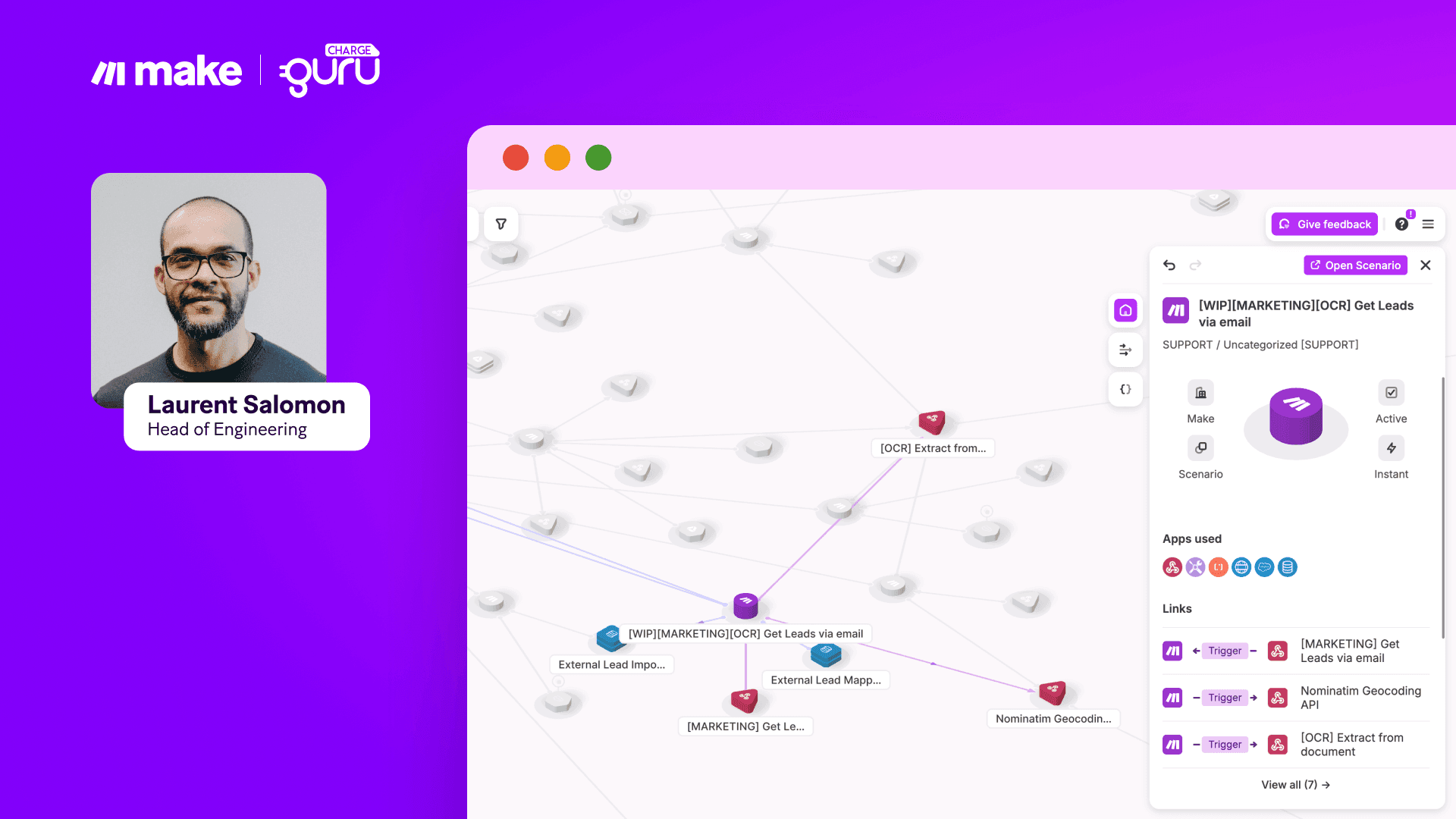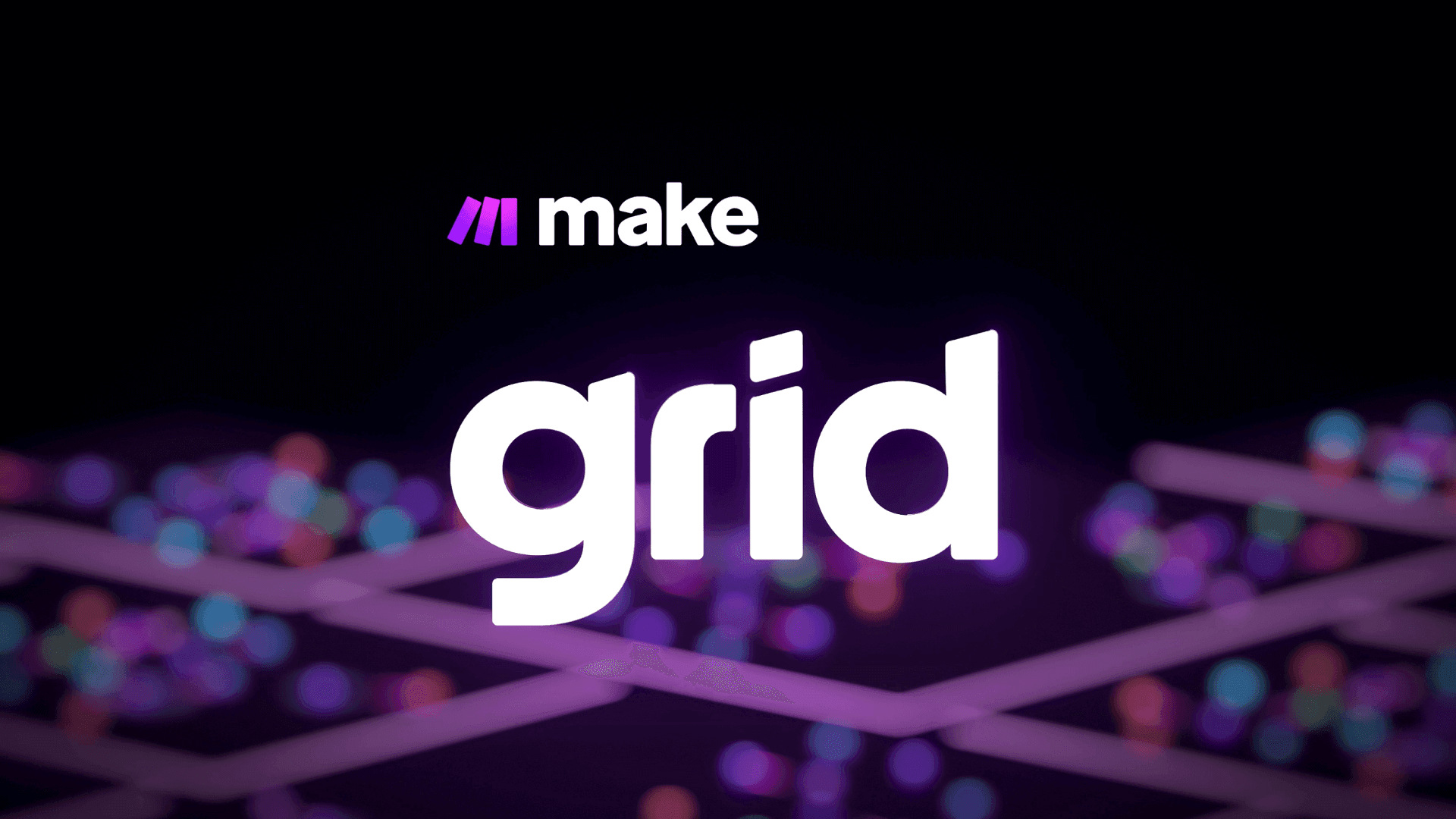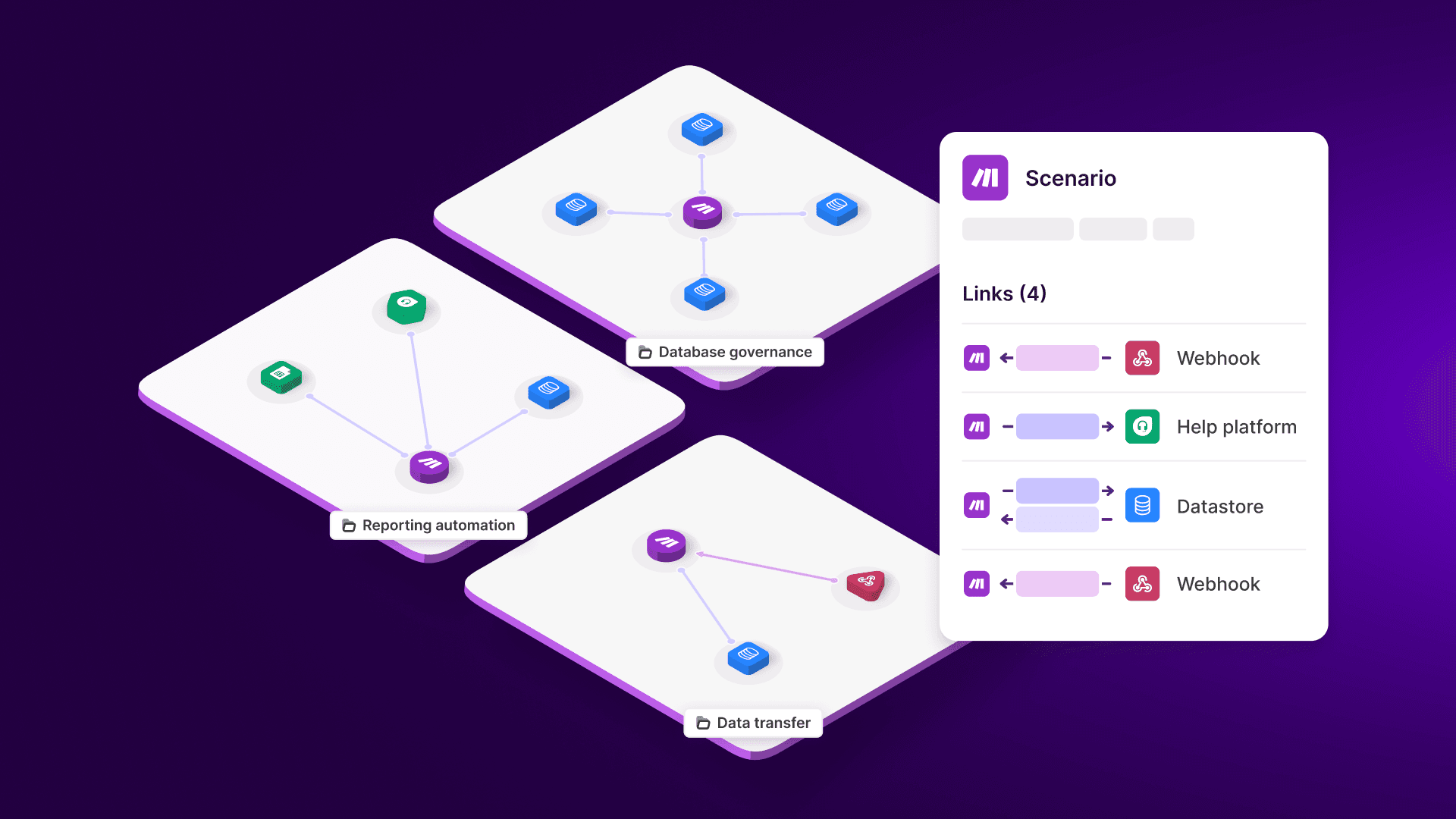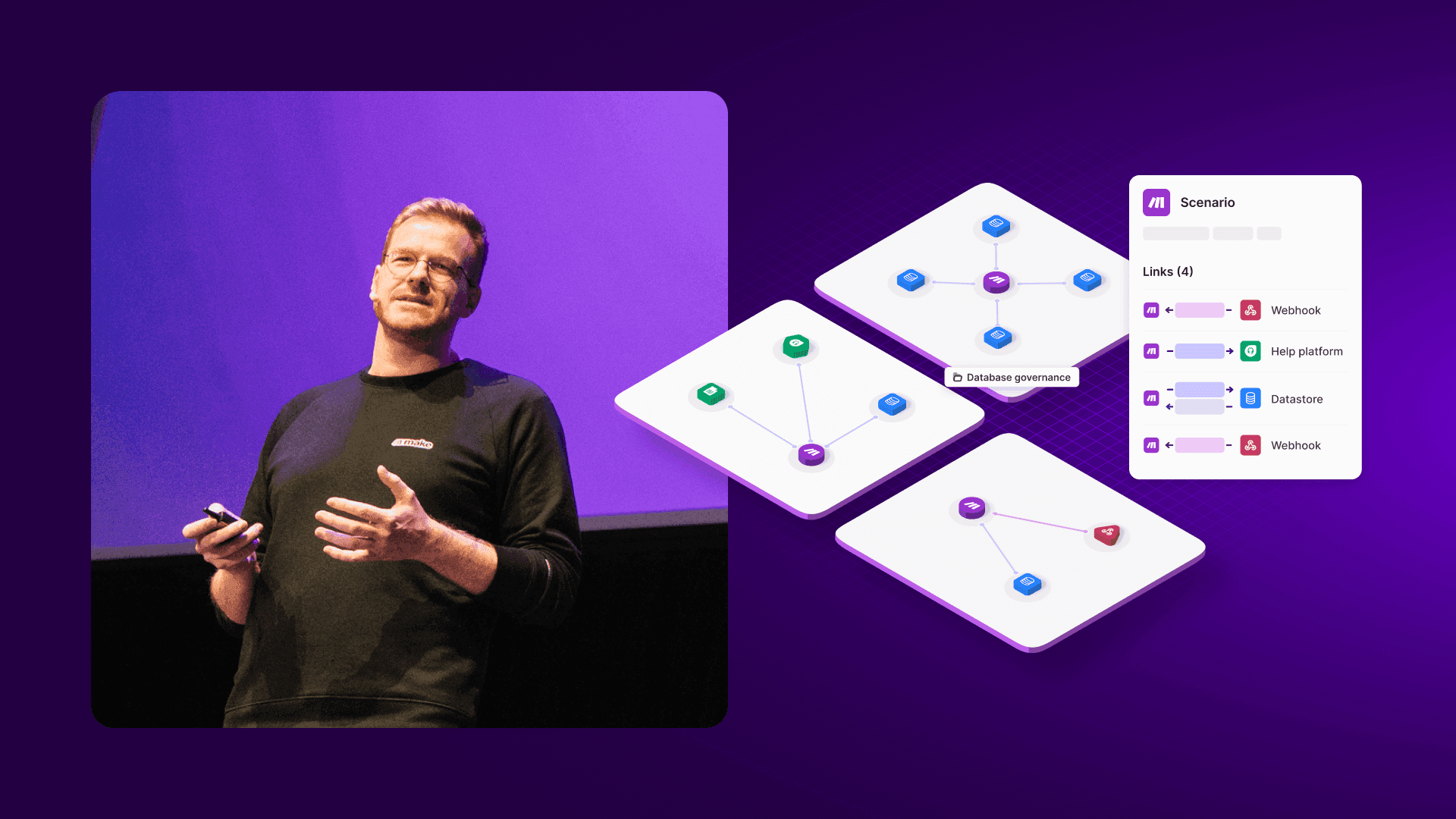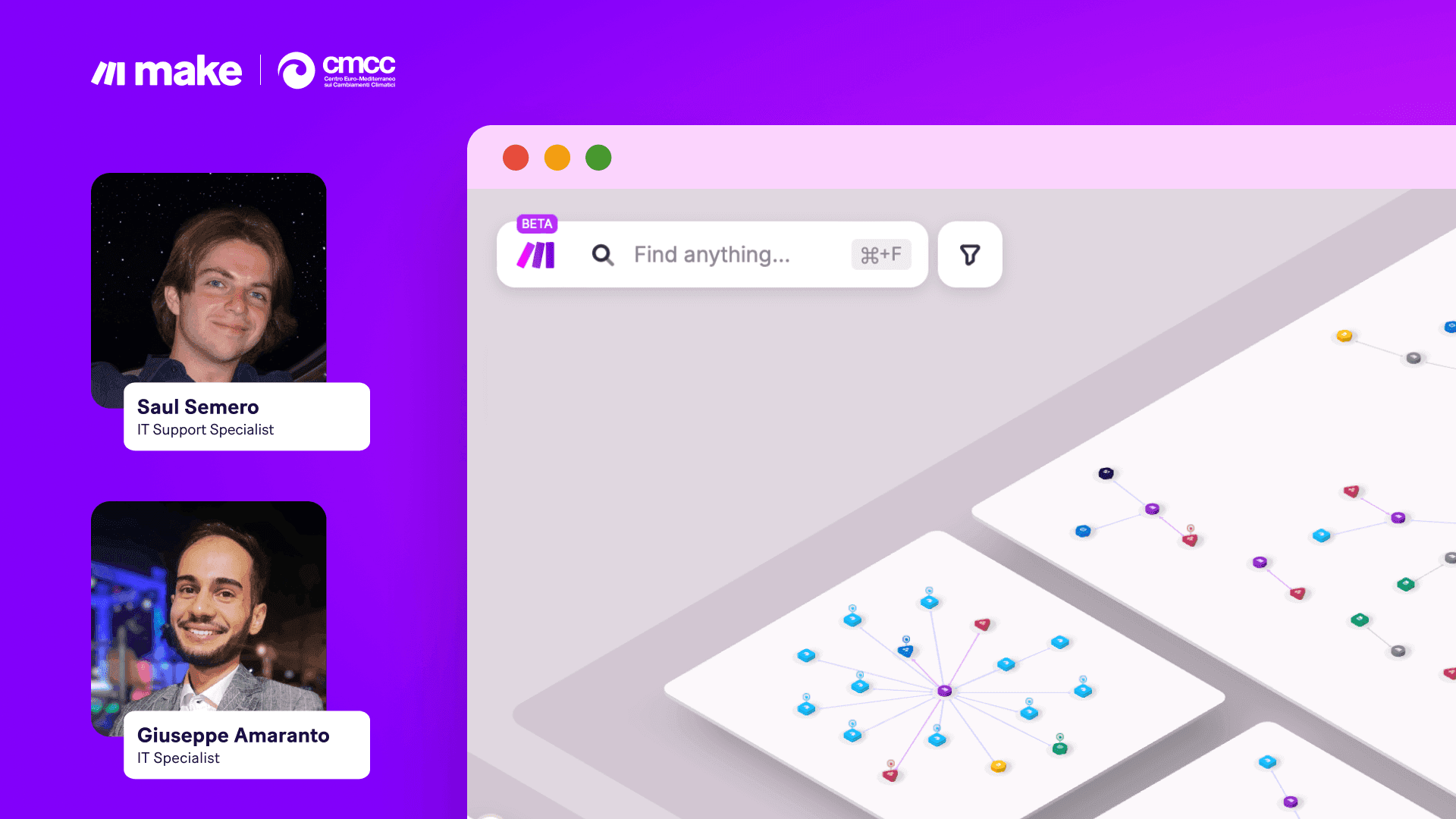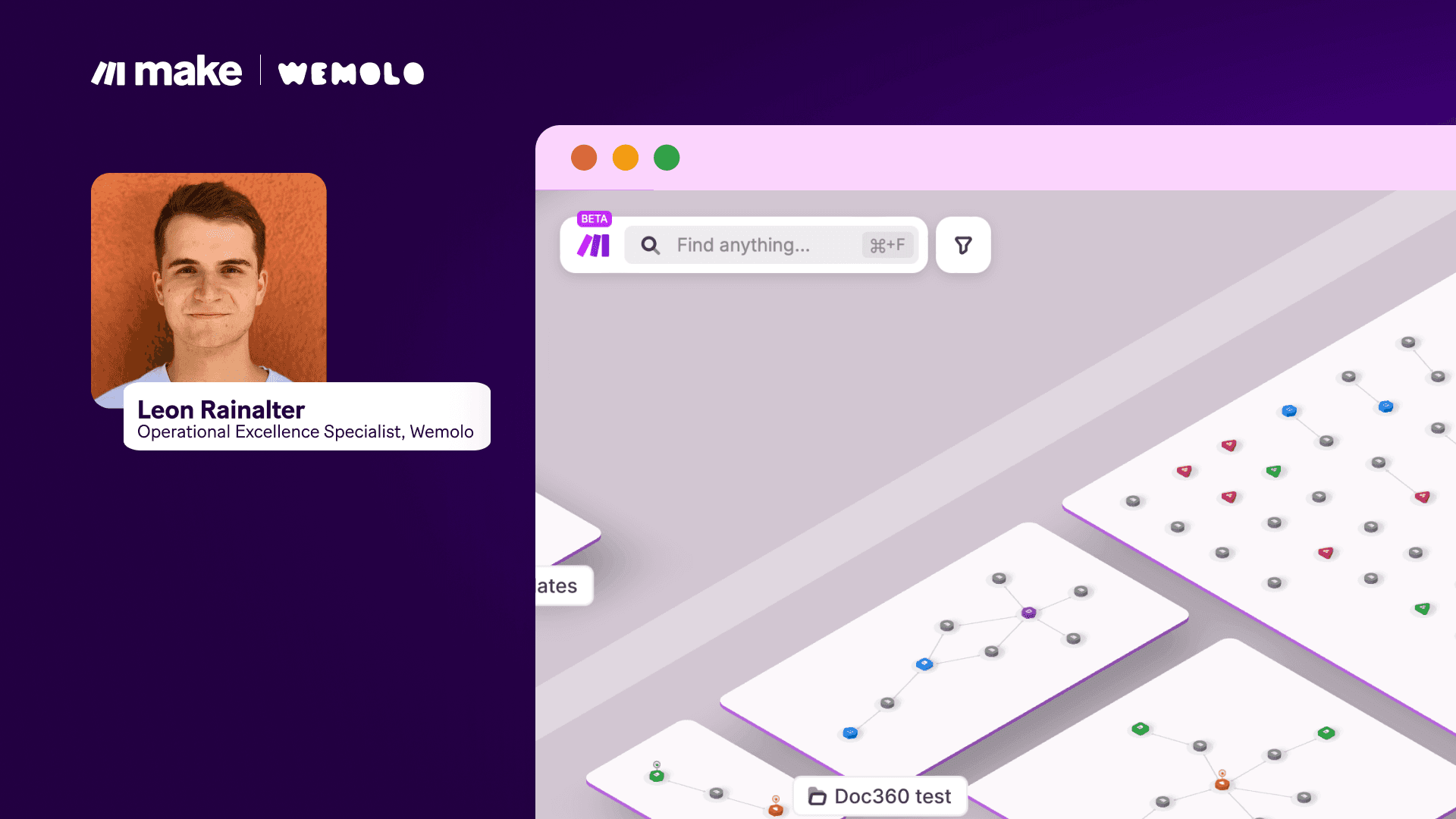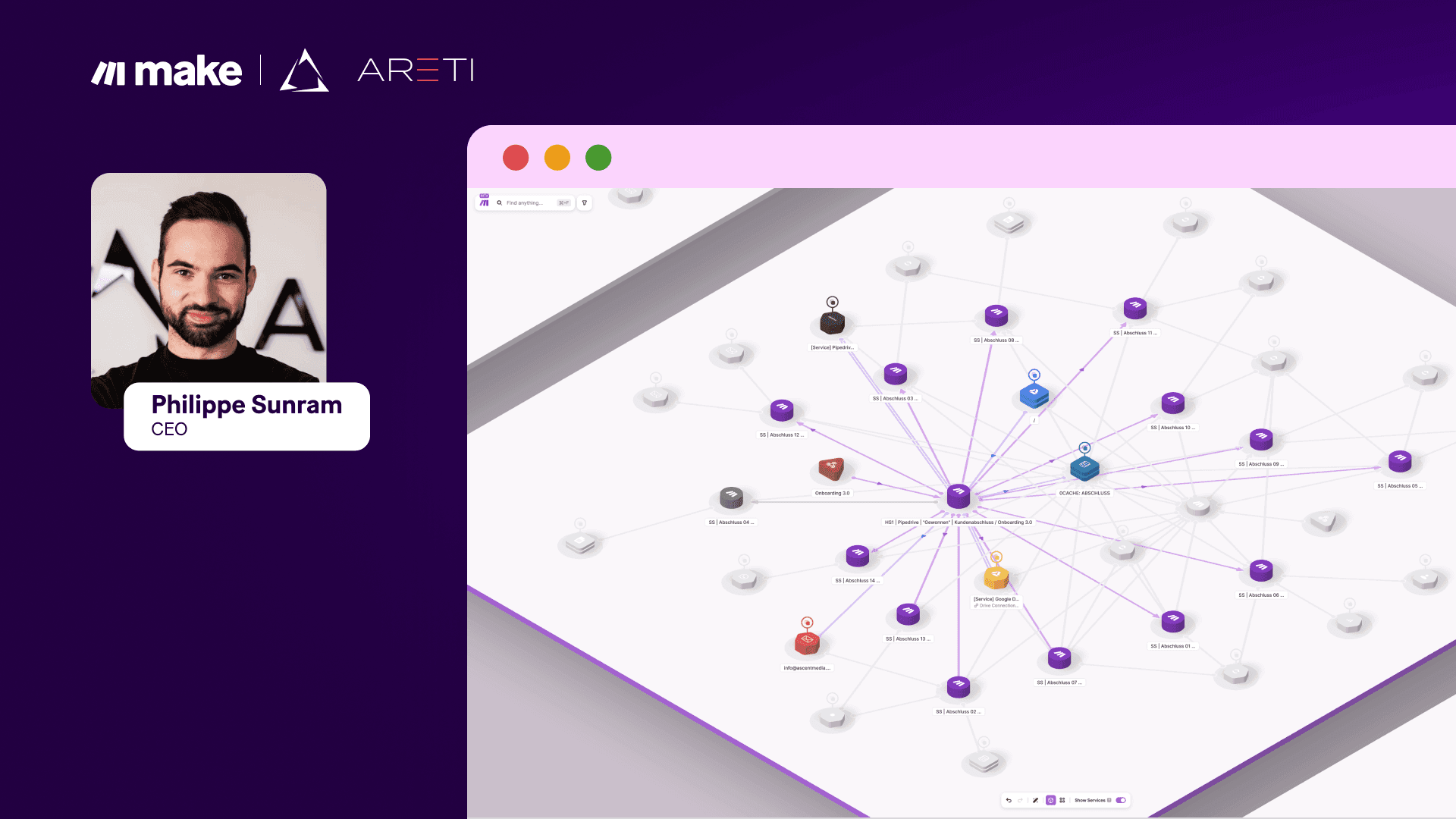Jul 8, 2025 | 5 minutes
How Make Grid unlocked scaling opportunities for 4 companies
Darin Patterson, VP of Market Strategy at Make, shares how real companies are harnessing Make's automation and Make Grid's visual orchestration to grow faster, more efficiently, and better.
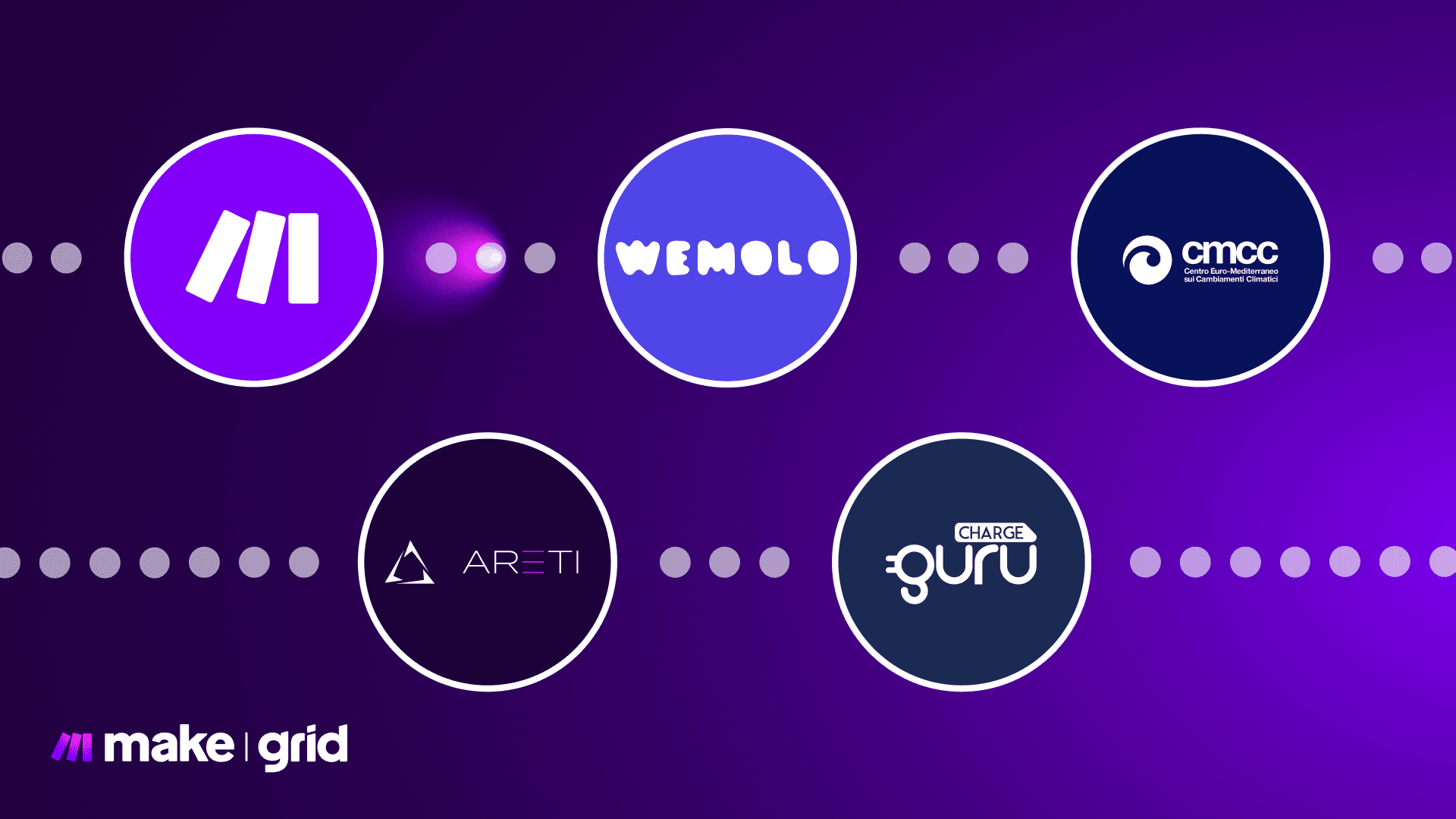
For today's businesses, scaling is everything. But as I often note, learning to grow efficiently is how truly successful projects can scale both quickly and sustainably. Part of efficient growth is establishing a culture that welcomes experimentation, AI, and constant learning – but it's equally crucial to give your company the resources to put that ethos into practice. Make Grid is one such tool that agile, growth-minded teams are embracing to ensure that automation and AI enable rapid scaling rather than hinder it.
Make Grid, just launched in open beta, is a first-of-its-kind, fully observable, auto-generated visual map of your AI and automation landscape. It's a way to visualize all of your Make scenarios in one place, how data flows across them, and how they all interact – it's a holistic view on how and how well your company's automation is working. Below are real examples from four real teams already benefitting from the powerful addition of Make Grid to the Make platform.
Make Grid helps companies get started with automation right
It's easy to forget – even as countless headlines focus on AI and as automation companies like Make celebrate nearly a decade on the market – that every organization is at a different point in the automation journey. The CMCC Foundation, for example, is leading on climate, but was lagging somewhat in automation.
To be fair, CMCC was using some basic automations such as those available through Monday.com. But their processes overall were largely manual and their data flows spanning both research and operations functions were fragmented, making fixing the issue seem daunting. They needed to automate fast while keeping an eye on where valuable scientific and administrative info was moving – it wasn't sensible or possible to do one without the other.
The Make platform, with Make Grid as an integral part, was the ideal solution. Make packaging no-code automation-building and visual orchestration capabilities seamlessly in one was how CMCC could lean in to automation. And by getting started on the right automation foot, scaling comes easily: reducing administrative inefficiencies by at least 50% allowed CMCC to spend more time on executing and spreading important research.
Choosing the foundation for your automation stack is crucial: it must be accessible and powerful, able to build automations and handle organization-wide orchestration – in other words, Make and Make Grid should be how companies kick off automating and scaling all at once.
Want more thoughts from Darin?
Darin's psychology background and tech experience make him a leading voice shaping the future of work. Read all of his in-depth writing about AI and agentic automation.
Make Grid helps automations – and organizations – adapt
But as your organization scales, changes are inevitable. Departments get reorganized, new team members join, and processes get revised. Keeping existing automations up to date and ensuring more can be added without issue is an ongoing process – and one that can seem fragile.
Wemolo, a parking management company of over 200 employees, was facing just this situation. They were keeping up with healthy growth through the use of about 500 Make scenarios every day, but these same processes needed significant attention whenever the young, dynamic firm pivoted – which was often. Even simple organizational changes like renaming a team could impact hundreds of automations, and sorting out unexpected errors was a headache. But it wasn't just tedious: the fear of breaking and remaking critical business scenarios led to employees losing trust in the wisdom of making changes.
Make Grid was the solution Wemolo needed. It allowed them to visually map their hundreds of scenarios and understand how they depend on each other before, during, and after making small updates or big operational shifts. Even a seemingly small functionality like Make Grid's search can be used to update 300 scenarios quicker, an effort that would have been overwhelming without an exceptional level of visibility. What's more, visibility also helped uncover unexpected interdependencies, meaning reorganizations were more effective.
Thanks to Make and Make Grid's integrated visual automation and orchestration capabilities, Wemolo is now able to manage seven times more projects and respond flexibly to organizational change with full employee confidence.
Make Grid enables more employees to use automation
At electric vehicle charging company ChargeGuru, Head of Engineering Laurent Salomon had already proven how Make's no-code automations could solve long-running manual bottlenecks at the 200-person company in as little as half an hour. His example made an impression: the number of active Make contributors within ChargeGuru soon reached 20, with many times that number in hours saved.
The benefits of spreading automation were clear, but more collaborators meant more complexity and more potential drag. One memorable example came when a Salesforce policy impacted dozens of scenarios at once. Debugging wasn't necessarily difficult, but it was time-consuming – identifying what the issue was, how many times it occurred throughout ChargeGuru's Make instance, and who exactly relied on specialized scenarios was tedious and risked serious downtime. Having a fully integrated view of dependencies and error trends platform-wide would allow them to tackle the unexpected challenges that come with implementing more automations in more parts of the company.
That's why Make Grid was a game-changer for ChargeGuru. With the ability to zoom in on or out of their auto-generated 3D map – from a global view of the entire automation landscape down to individual assets – anyone can view scenario dependencies and ownership at a glance, instantly spotting broken or underperforming automations and slashing debugging time. The added ability to search and filter scenarios by team, author, error criticality, or app helps easily track progress and onboard new users.
Thanks to the accessible power of Make Grid, ChargeGuru is growing the number of employees actively automating with Make to as many as 100 – nearly half the company.
Make Grid means better client pitches – and more clients
But scaling fast and efficiently isn't just an internal matter: at the end of the day, maximizing ARR per employee means bringing in customers too. Few know this better than creative agencies like ARETI, a lean team of a few dozen employees who had already achieved 500% efficiency gains thanks to hundreds of Make scenarios.
With internal client-servicing processes already nailed down, it became time for ARETI to go out and sign more customers. But in the room while making their pitch, ARETI was finding it difficult to fully impress on potential clients how an automated backend really changes the game of data-driven content and strategic media campaigns. They could walk clients through a couple scenarios or painstakingly recreate mock-ups in Miro, but there wasn't a way to show how powerful and adaptable ARETI's approach was when everything worked together in real time – the "wow" factor was missing.
Enter an interactive map of company processes: Make Grid creates a clear picture of ARETI's backend logic that every client can grasp in seconds. Better still, there's no time wasted on making stand-in slides or memorizing new info: what you visualize in Make Grid is what you actually work with day-to-day. Make's platform-wide visual approach is what makes things click and gets everyone on the same page – for ARETI, that resulted in $100,000 in added revenue in just two months.
Start scaling better with Make Grid
No matter what point you're at in your scaling journey, you're going to need automation, AI, and orchestration capabilities to make sure you're getting the most out of all three, quickly and easily. That means Make Grid's visual automation isn't just first-of-its kind, but crucial to success in an increasingly complex business environment. Get started scaling with Make today.

